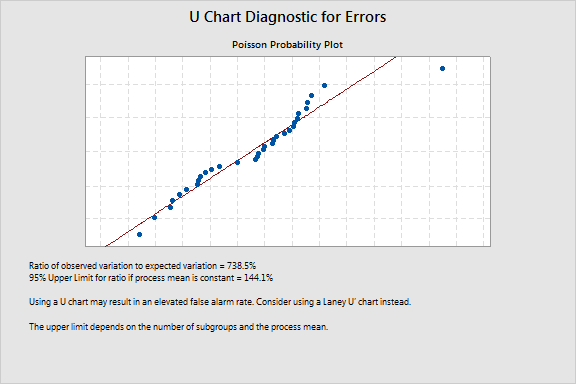|
|
U Chart DiagnosticGraphs - U Chart Diagnostic |
The results of the U Chart Diagnostic include the following elements:
- If the ratio is greater than the 95% upper limit, your data exhibit significant overdispersion.
- If the ratio is less than 60%, your data exhibit significant underdispersion.
If your data exhibit overdispersion or underdispersion, a Laney U' chart may more accurately distinguish between common cause variation and special cause variation than a traditional U chart.
Example Output |

Interpretation |
The high ratio of observed variation to expected variation, 738.5%, suggests overdispersion. The ratio is greater than the 95% upper limit, 144.1%. Overdispersion can cause points on a traditional U chart to appear to be out of control when they are not. To correct for overdispersion, use a Laney U' chart.
To see the same data plotted on both a traditional U chart and a Laney U' chart, see Comparing traditional U charts and Laney U' Charts.